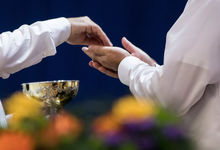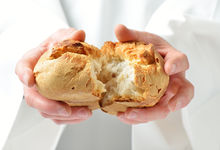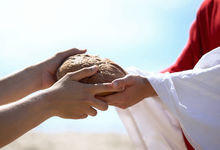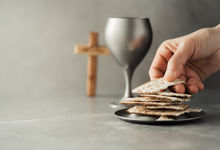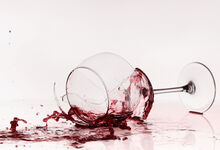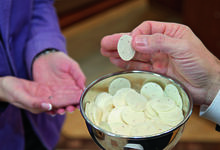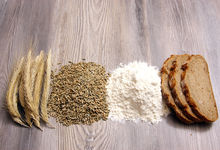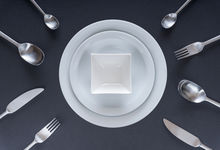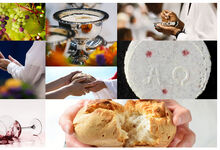The sacraments (28): What the churches are serving with supper
Red wine, white wine, grape juice? Pure or mixed with water? As with the bread, Christendom has also come up with a multitude of variants for the second element of the Lord’s Supper. And each has its reasoning—sometimes based on theology, sometimes based on more worldly factors.

Wine? Strictly speaking, there is no mention of it in the biblical accounts concerning the Last Supper. While Jesus’ words of institution only speak of the “cup”, we do clearly read that its contents were derived from the “fruit of the vine”. In ancient times, this might have been any one of three different possibilities, however.
The least likely of these is grape juice. The reason this is unlikely is that grape juice could not be preserved in those days, and it was the wrong time of year for fresh must (that is, grape juice that also contains the pulp and skins). Wine vinegar, which was mixed with plenty of water and consumed as a thirst quencher, is hardly more plausible in this situation because the Last Supper was a festive meal. And on such occasions, classically fermented wine was served—often diluted with a small amount of water.
“Grape blood” and hot water
And it is with a fairly high degree of certainty that we can assume this was red wine. This is not only supported by its symbolic proximity to the colour of the blood which Jesus references. Already in the Old Testament, wine was at times described as “grape blood”. To this day, the Orthodox Churches insist on celebrating the Eucharist with red wine.
For centuries, this was also the norm in the Catholic Church. White wine was only approved in 1478 by Pope Sixtus IV—and it has largely prevailed since that time. This has more of a practical reason than anything else: since 1570, the Missal of Trent has prescribed the use of a special cloth napkin (the purificator) for the purpose of cleansing the chalices. And white wine leaves far fewer unsightly stains than red wine.
Both the Catholic Church and the Orthodox Churches pour water into the wine. In the West it is only a little splash. In the East, however, water comprises up to a third of the chalice and is heated—in order to bring the mixture up to body temperature. This ritual in the liturgy is known as “Zeon” and has been known from Constantinople since 582 at the latest. One way or another, it derives from a specific occurrence that followed Jesus' death on the cross: “But one of the soldiers pierced His side with a spear, and immediately blood and water came out.”
Taking account of culture and illness
A comparatively recent invention in church history is the use of grape juice. This has its roots in the revival and sanctification movements of the nineteenth century, when abstinence from alcohol was part of the new lifestyle to which the faithful aspired. The breakthrough came with two different clergymen, one of whom proposed the theory that unfermented wine was indeed served at the Last Supper of Jesus. And the other actually came up with a method for preserving grape juice.
It was by way of Methodist churches that this variant made its way from the USA to Great Britain and then to Europe and the rest of the world. Today grape juice is used in many denominations where children are also permitted to participate in the Lord’s Supper. In the Lutheran Church, grape juice is at times allowed as an alternative to wine, but it is actually supposed to remain the exception. Nevertheless, the trend is moving in this direction, as more and more churches are taking into account the needs of those who suffer from alcoholism.
The possibilities are even more diverse in the Anglican Churches, which adapt their liturgies to the respective countries in which they work, in the context of their inculturation efforts. In some places, for example, fruit juices or raisin infusions are permitted for the celebration of Holy Communion. The latter variant almost brings the story full circle: raisin infusion was the drink that Jewish children were given as part of the festive meal already 2,000 years ago.



